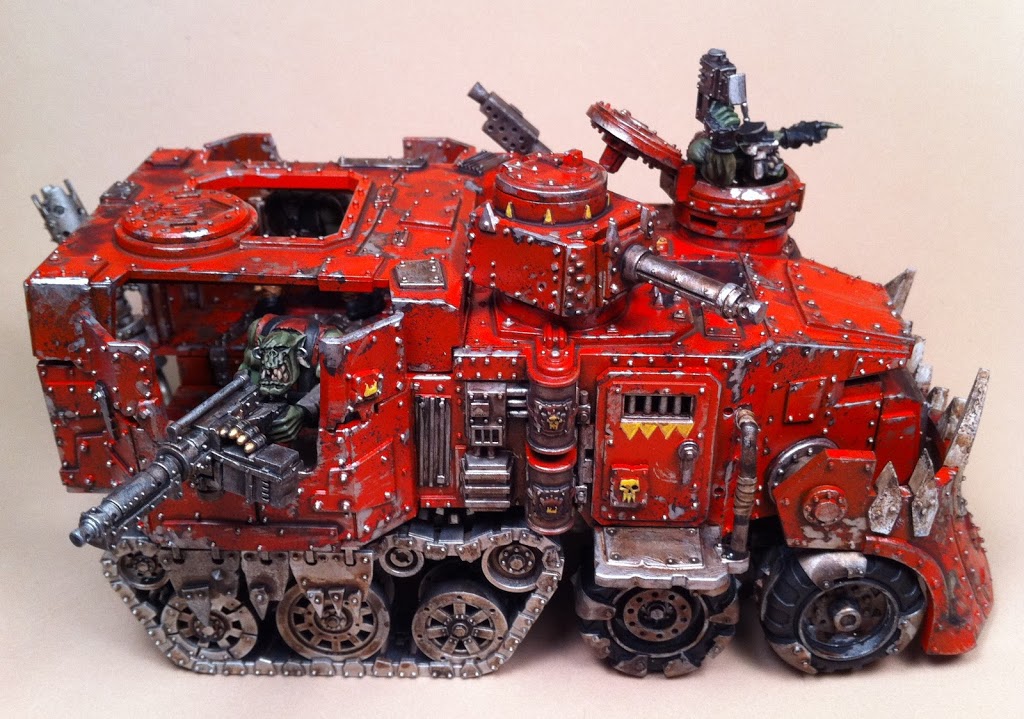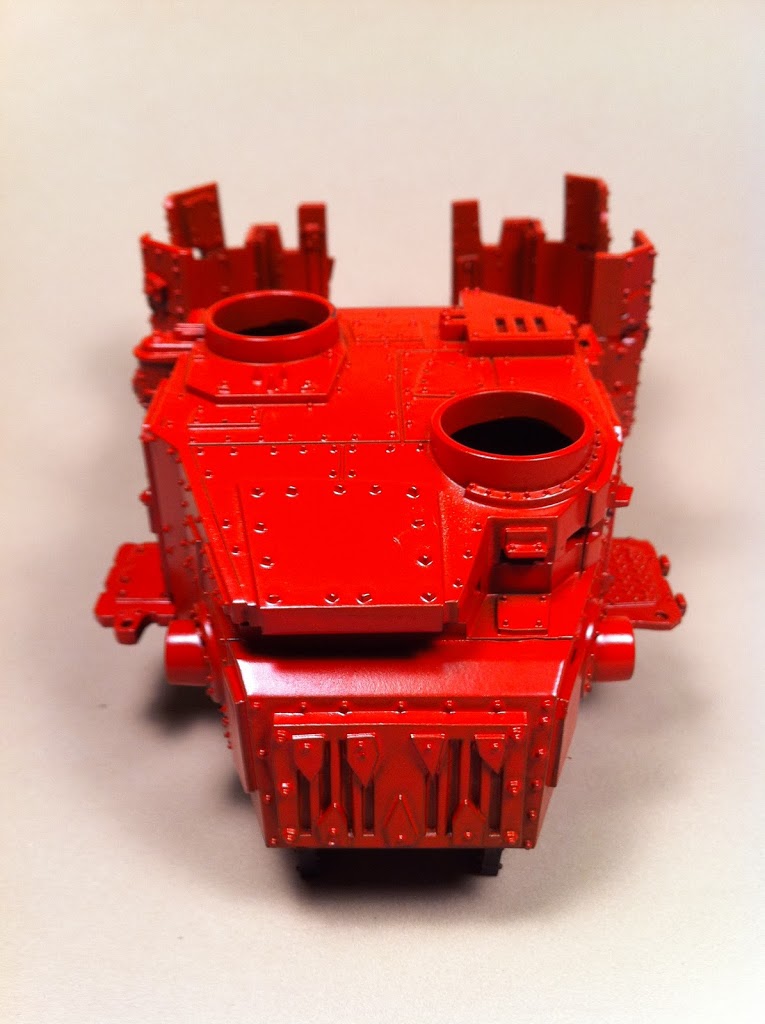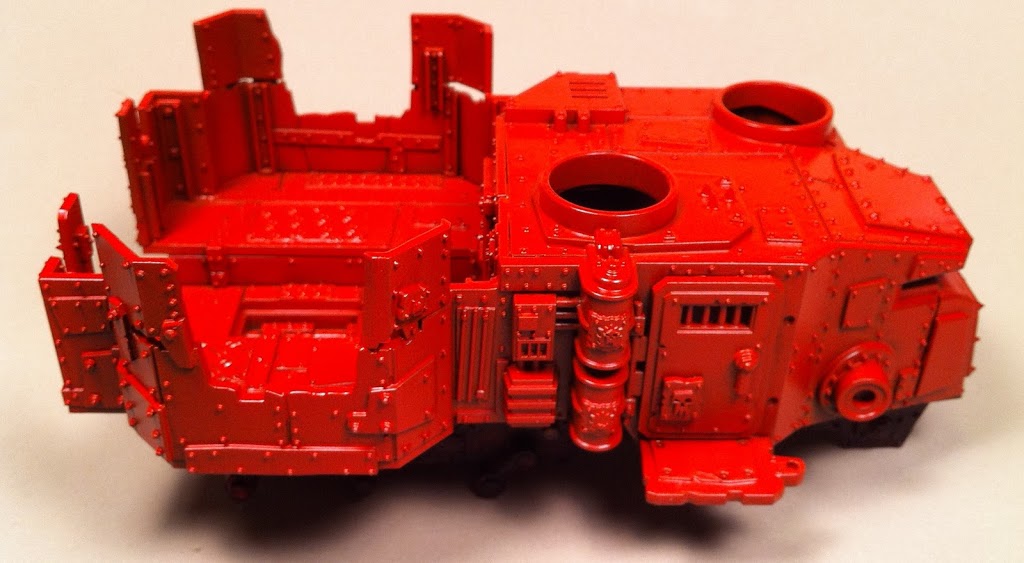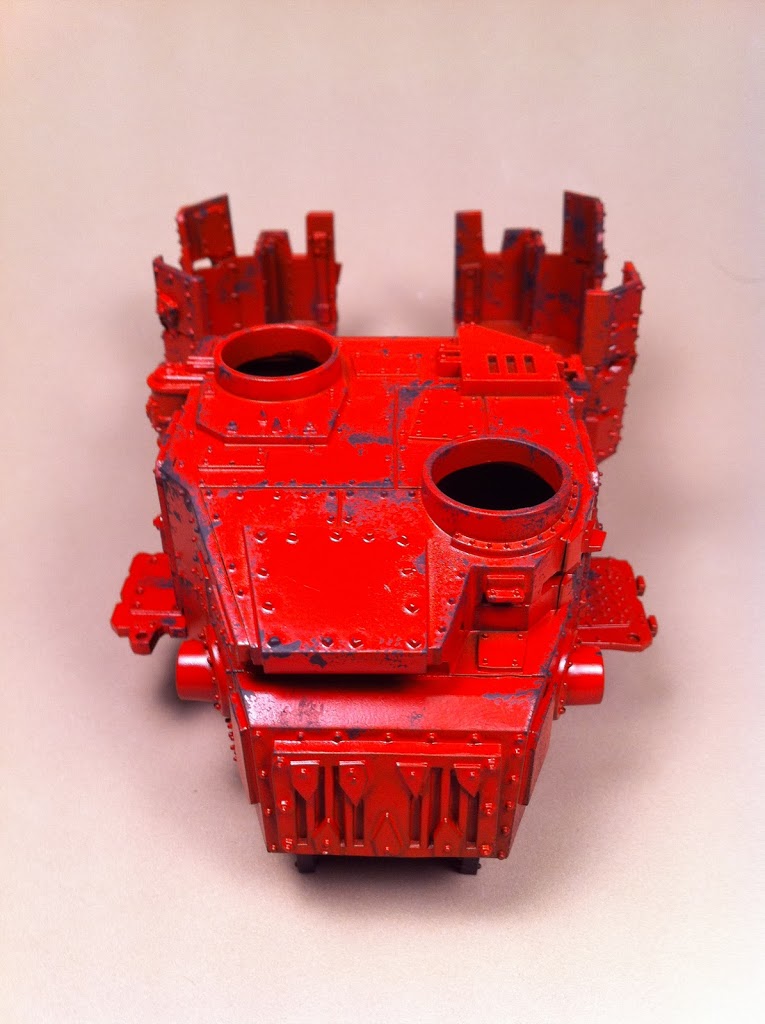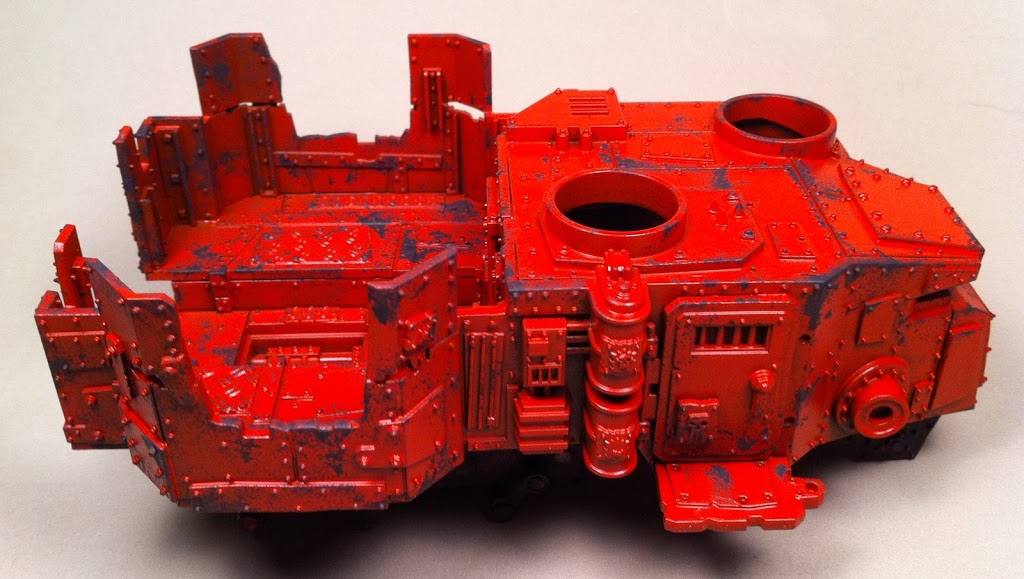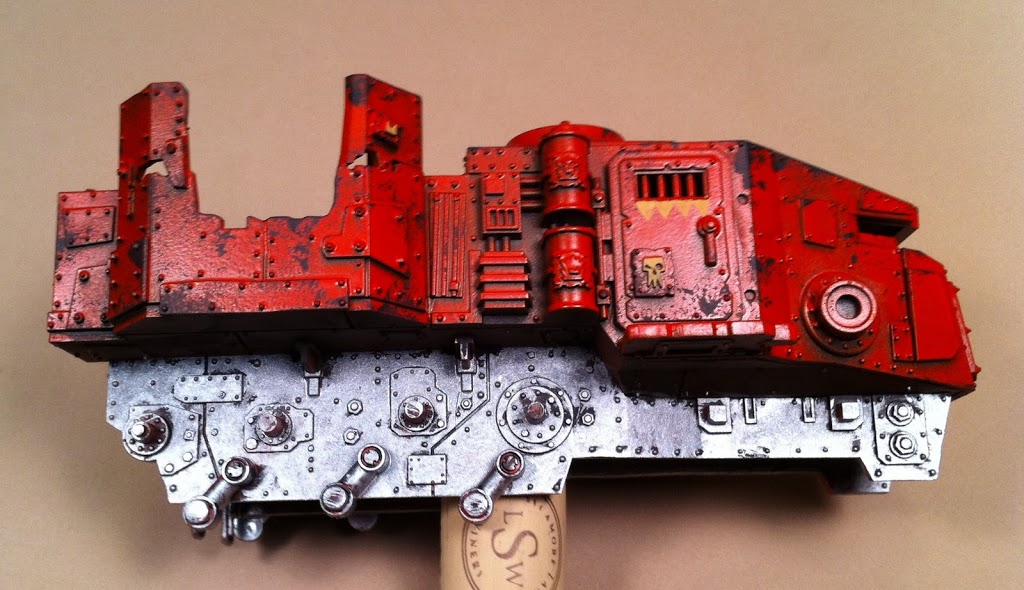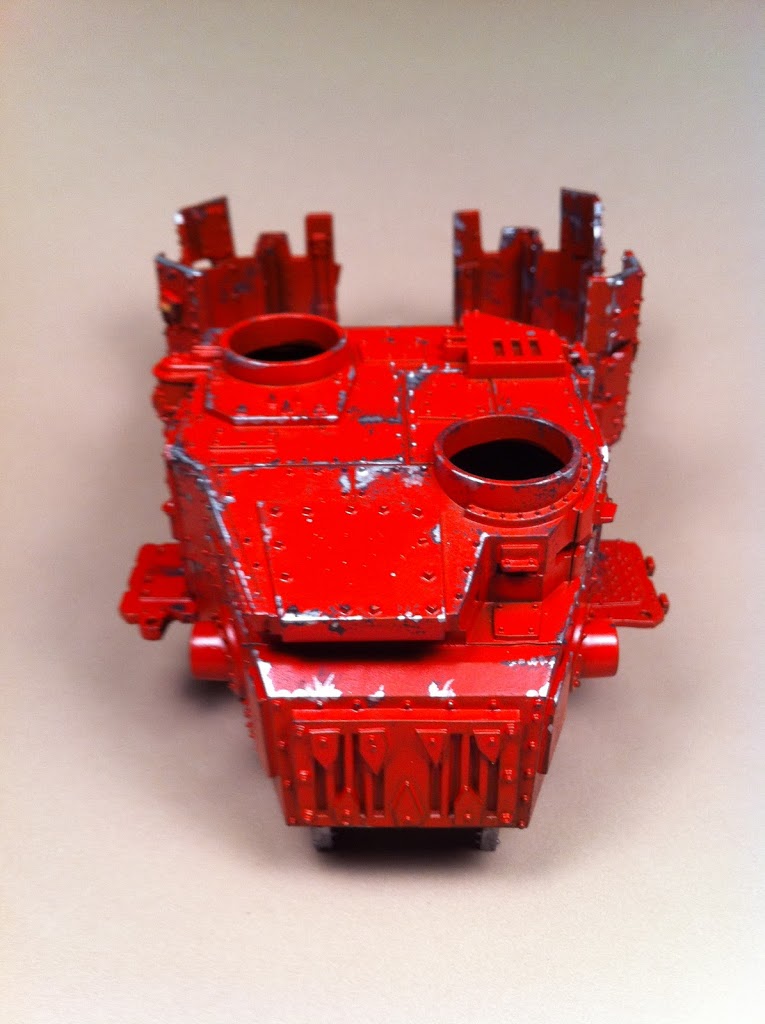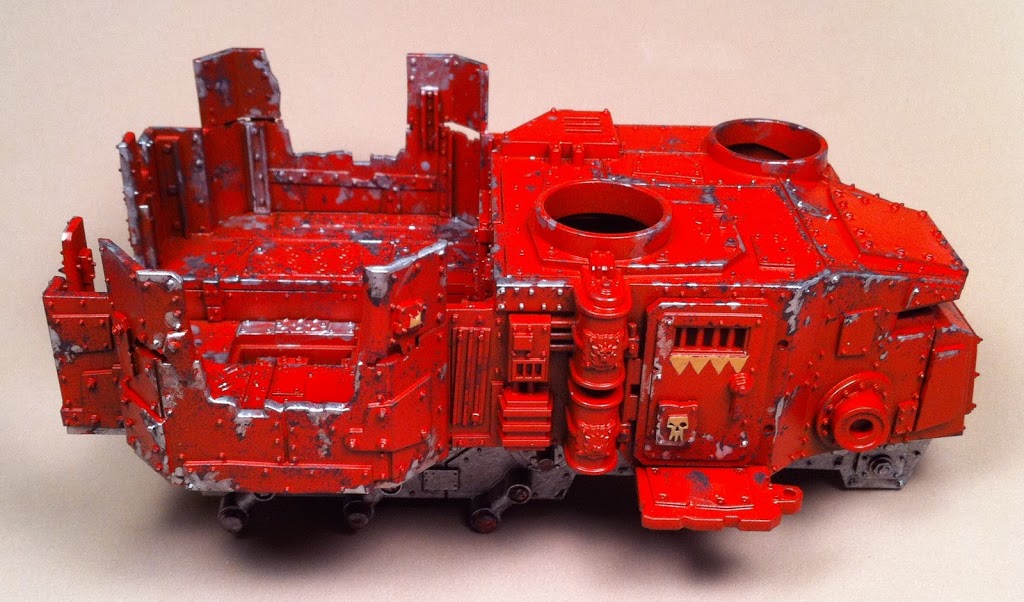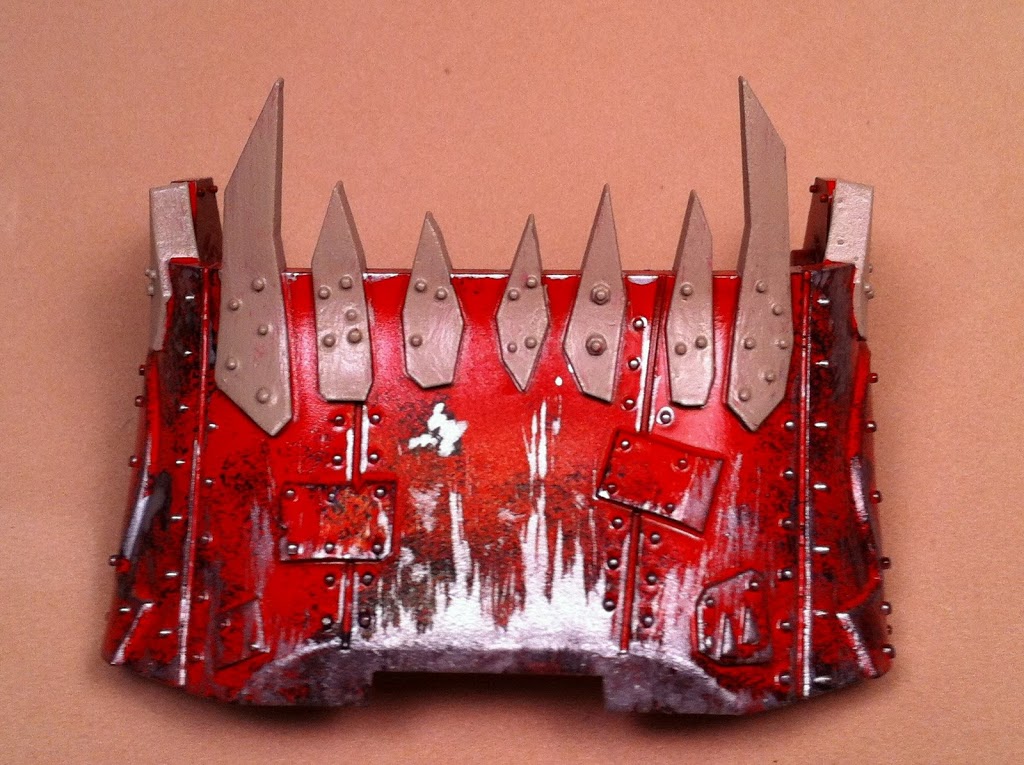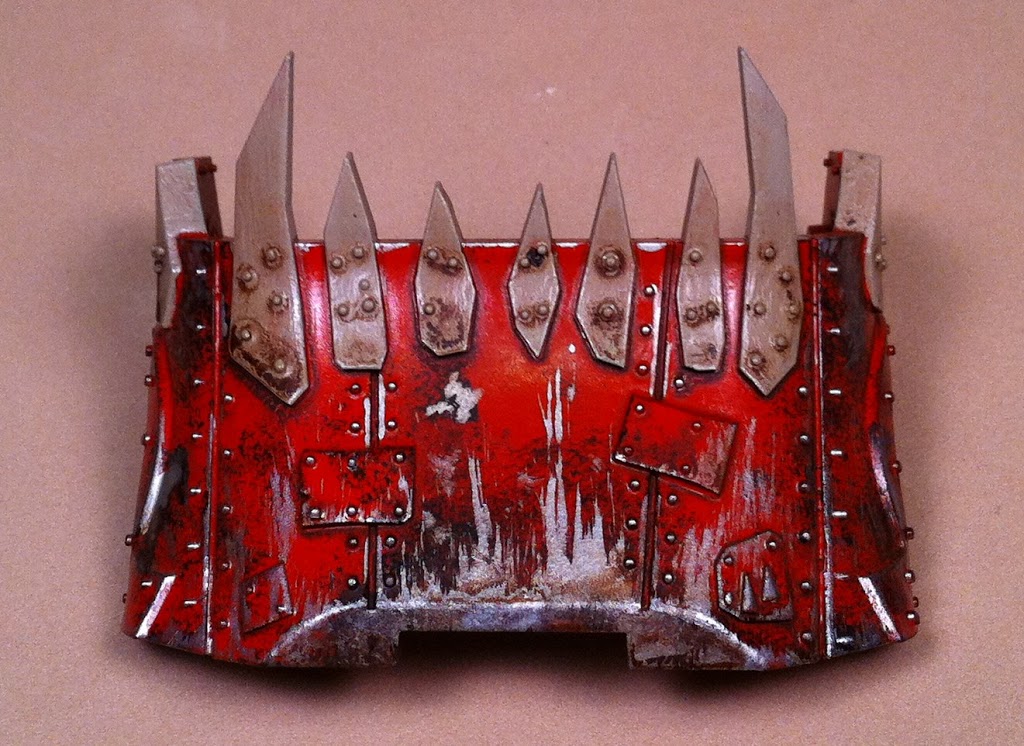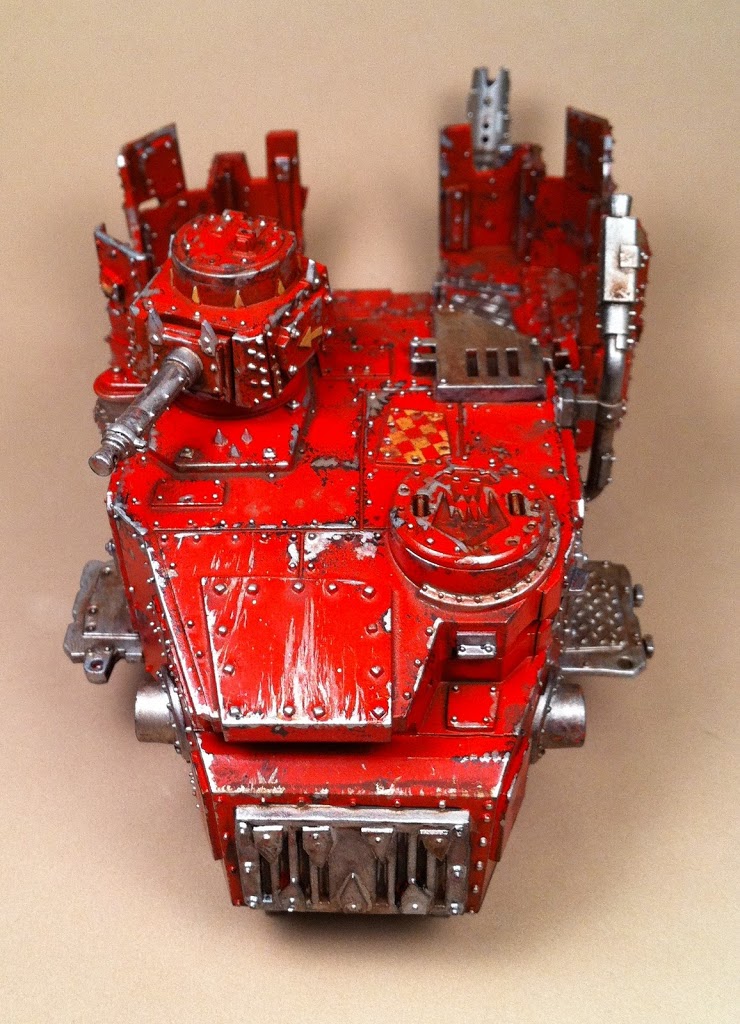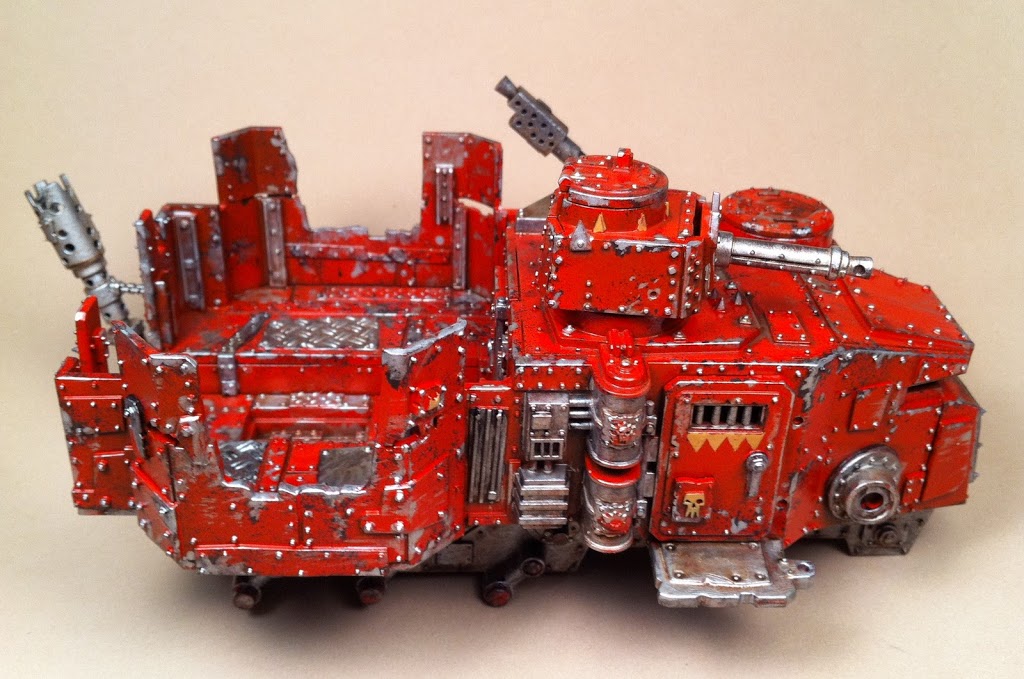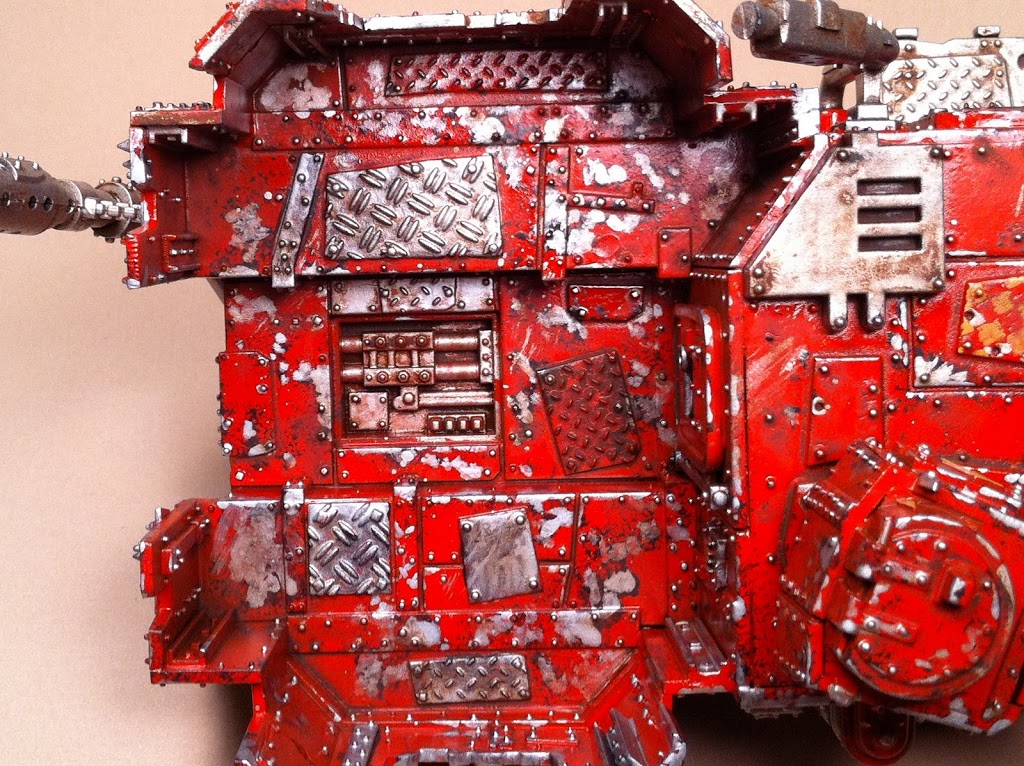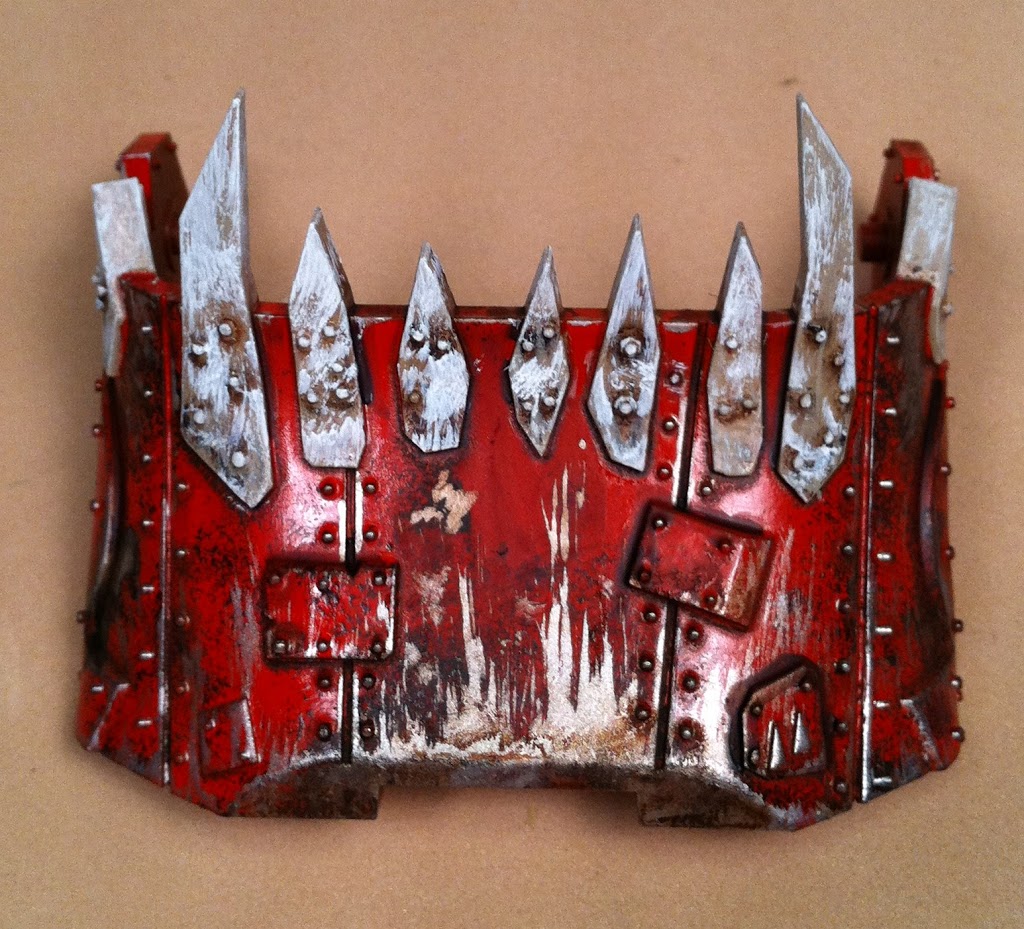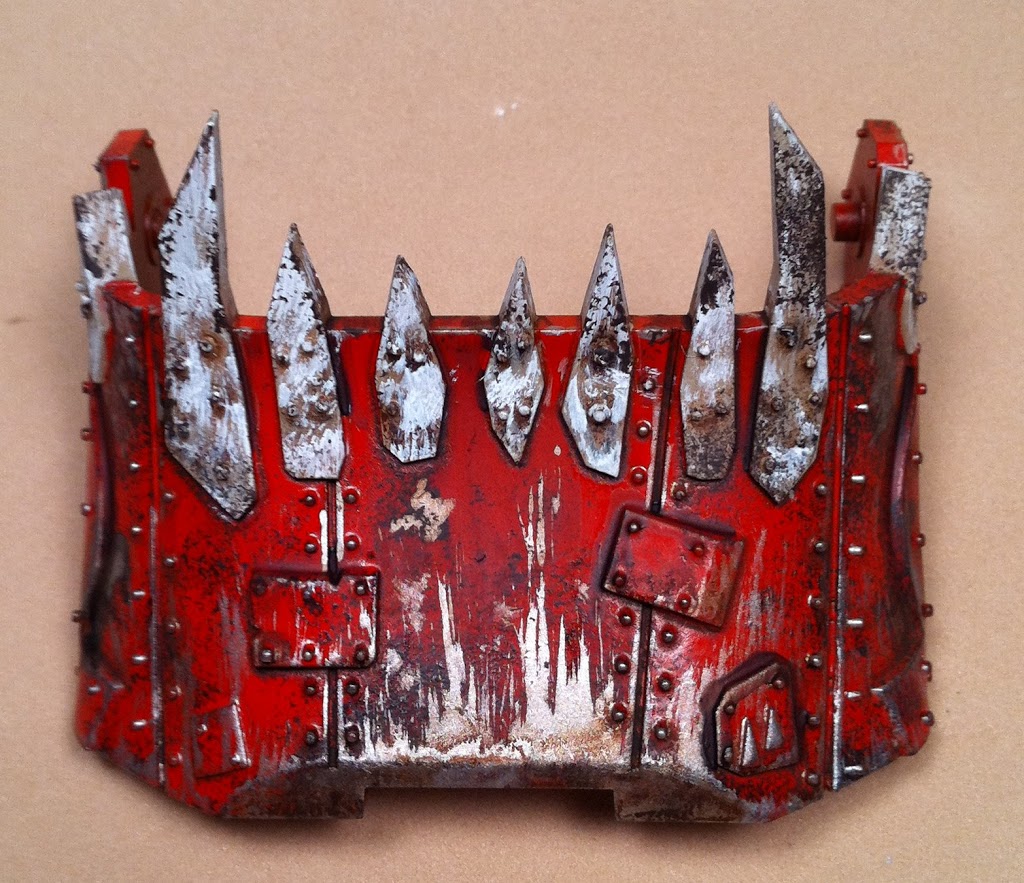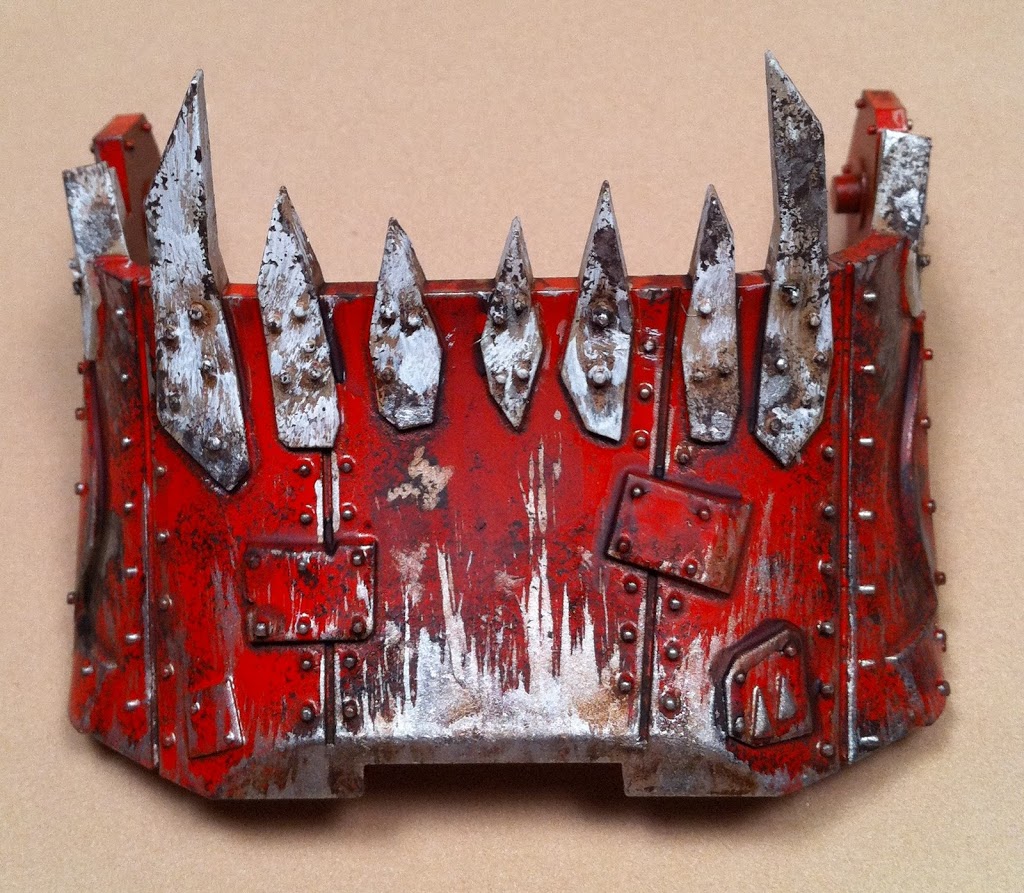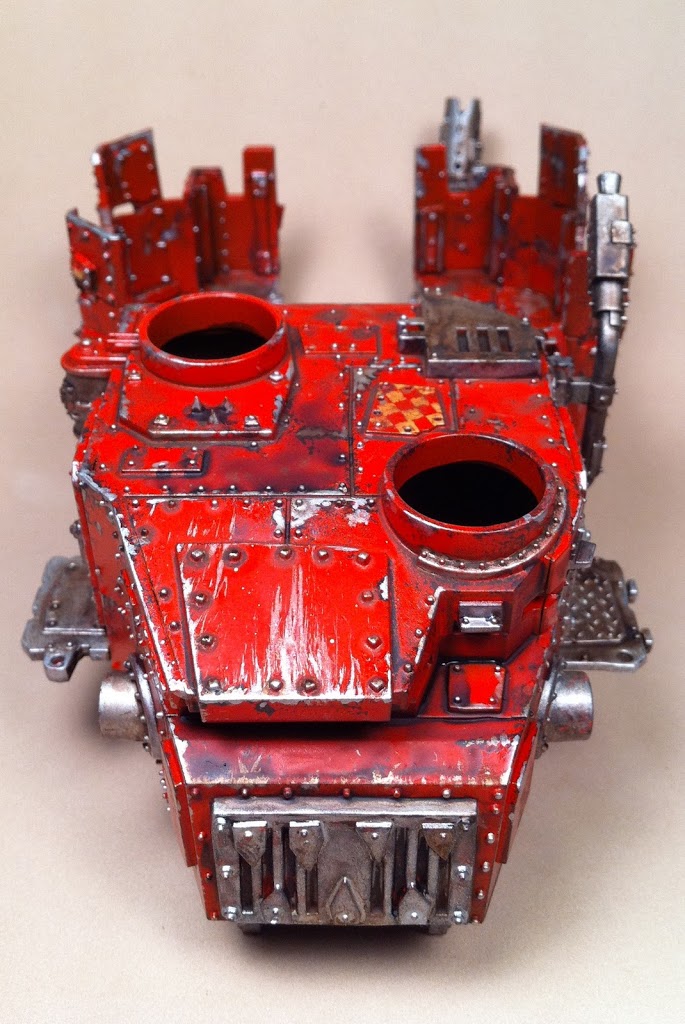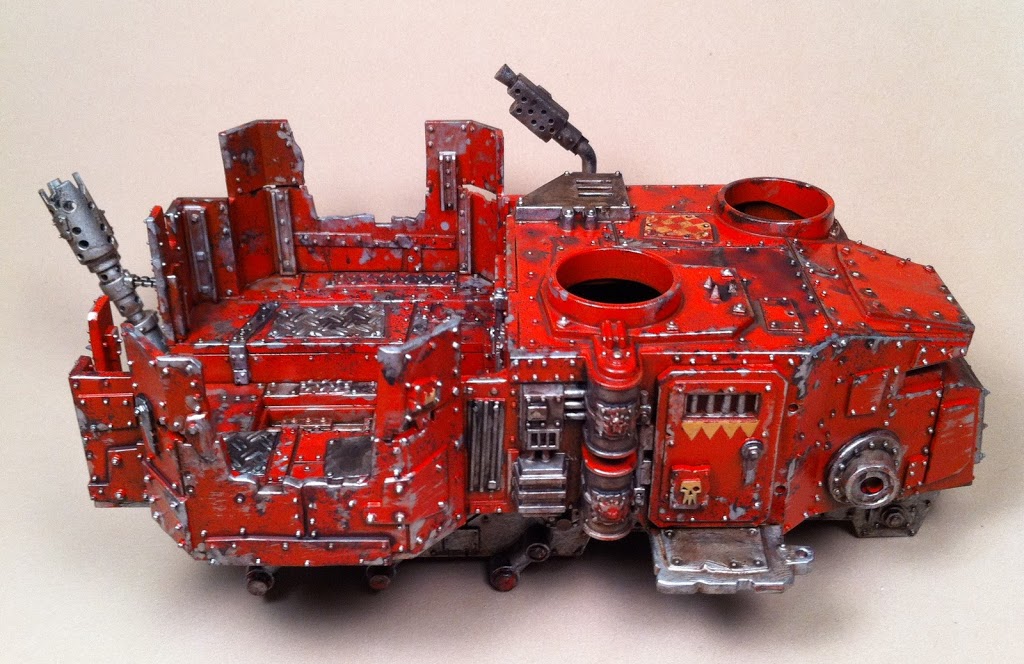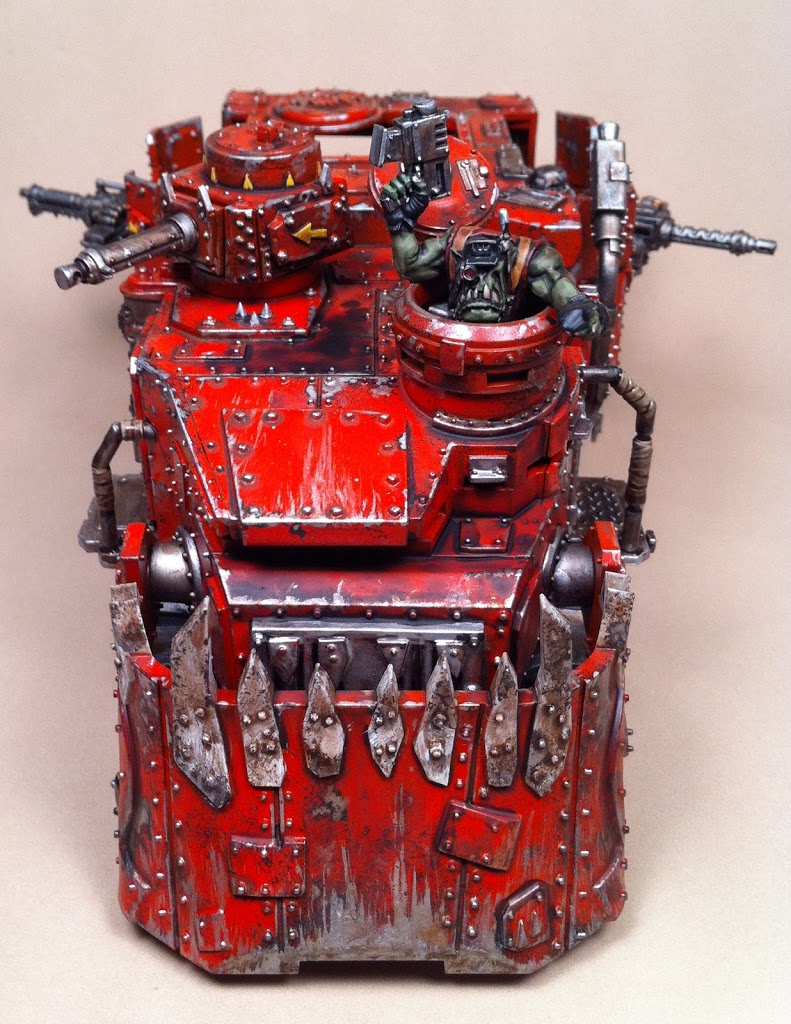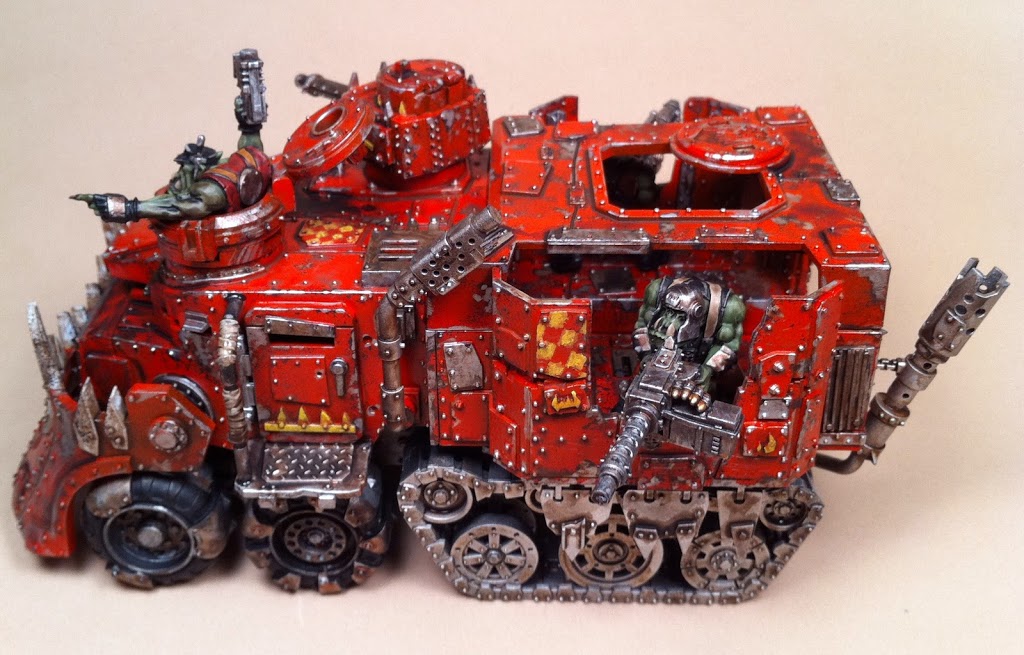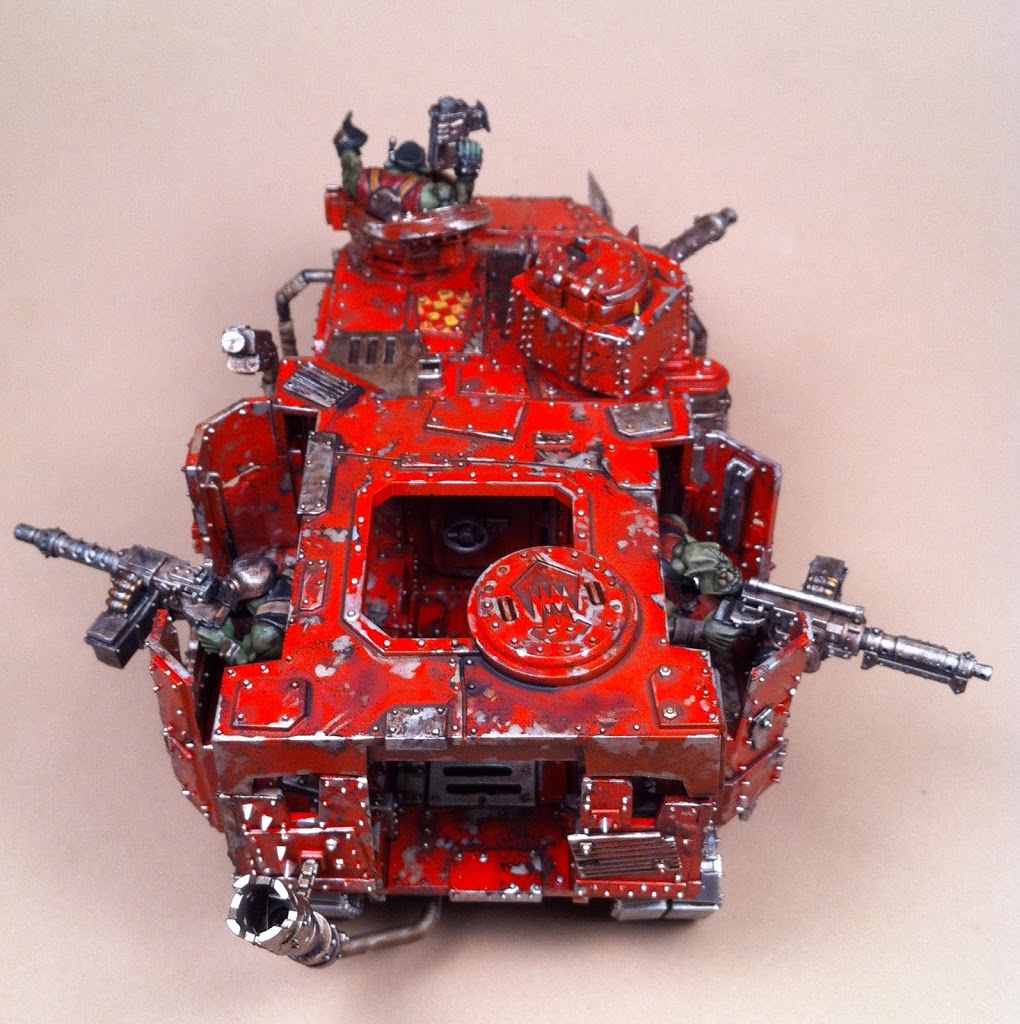40k: Ork Battlewagon Painting Tutorial – Part 1

Hey guys, iPaint here. It’s been a while, but I’m back with a new tutorial, this time for an Ork Battlewagon. This will be a multi-part tutorial, so be sure to check out the future installments as work continues.
I’ve long been a fan of Orks, and as any Ork worth his green hide knows, “Red ‘uns go fasta!” So, we will be painting this Battlewagon as either a Kult of Speed vehicle, or simply your favorite clan’s Battlewagon with a Red Paint Job. I’ve gone ahead and clipped, cleaned, and sub-assembled the model to allow me to start painting with as few basecoats as possible. So, without further ado, on to the tutorial proper.
Part One:
*Notes on Assembly
I’ve decided to use a sub-assembly method of painting this miniature, and the reasons are two-fold. One – I want to minimize the number of times I basecoat pieces, and two – it allows for maximum interchangeability depending on what I want my model kitted out with.
Everything was sprayed with Krylon Flat Black to start with. I then sprayed the main cab, crew compartment, and body of the wagon, as well as any turrets, the ram, and other options, with Rustoleum Flat Paprika. The tracks, exhausts, and any metallic plates were then sprayed with Krylon Matte Aluminum. I let each coat of spray set for about two hours before applying another coat. Be sure to spray in a ventilated area, and place some newspaper down or use a spray box.
For Part One of this tutorial, we will focus mainly on the hull of the Battlewagon, so set aside your wheels, tracks, and other pieces. We just want all of our red pieces right now. Here we have the main hull of our Battlewagon sprayed Paprika. Any methods used on the hull will work just fine on any of the other red pieces, such as turrets and the ram.
Our first step to dirtying up our wagon is to apply a 1:1 mix of Bestial Brown and Chaos Black all over our model using the sponge technique. Grab a piece of blister foam or a Brillo pad and dip it into the paint mix, then wipe some of it off on a tissue. Then, dab the foam across the model, focusing on where grease, dirt, and the elements would wear away at the paint. Be sure to vary the application of the paint for the best effect.
Next, we will apply a basecoat of Chainmail over the metal parts underneath the hull. Iyanden Darksun is used to paint on dags, checks, and any other sort of Orky warpaint, as well as any of the glyphs.
Using Chainmail and a small brush, start applying metal scrapes across the dabbed on brown-gray painted areas. We want to achieve the effect that the paint has chipped away on the grimy areas. Stippling and streaking are excellent techniques for creating realistic scrape patterns. To stipple, take an old medium sized brush and dip it into your paint. Then, wipe away some of the paint on a tissue. Then, lightly poke the areas you want to stipple, as though you were dotting an “i” when writing. Poke away until you get a nice fading effect between red and silver. To streak the paint, I recommend grabbing a children’s watercolor brush, or a brush with really stiff bristles, preferably with irregular bristle lengths. Load up your brush with paint so that the bristles are full up to the handle (this is never recommended when using a nice brush, as it will ruin your brush’s point, but we don’t really care about this brush. Plus, the worse the brush, the better the streaks!), wipe away some of the paint on a tissue, then quickly work it across the edges of the model with fast directional strokes. Most scuffs and scratches will be horizontal in nature, but feel free to experiment.
Next, basecoat any metal plates on the hull you want to be bare metal with Chaos Black. When dry, hit them with a coat of Chainmail. Next, with a small brush and Chainmail, pick out all the rivets. This is a tiresome process but really makes the vehicle pop.
Take your ram and basecoat the teeth with Dheneb Stone.
The Battlewagon is then sprayed entirely with a gloss varnish and left to dry for a few hours. Next, grab your oil paints and some thinner. I use Daler-Rowney Black, Burnt Umber, and Raw Sienna for my weathering process. Create a 1:1 mix of Raw Sienna and Burnt Umber, and then thin it to a wash consistency using your paint thinner. Apply this wash over all of the model and let it dry for a few hours.
Once dry, create a 1:1 mix of Black and Burnt Umber and thin it to the same consistency as before, and repeat the process of applying the wash all over the model. Oil paints create a nice dirty finish that is excellent for mimicking grease, grime, dirt, and all the other stuff that would dirty up an Ork vehicle.
I only did these two coats, and already the model is starting to look great! Feel free to add more and more coats of oil paint, focusing on the areas where dirt and grime would accumulate. When you’re satisfied, seal the model with a matte varnish. This will prep us for the next part – acrylic washes.
I will be using Games Workshop’s Citadel washes from here on out, and having a matte seal on the model will allow my washes to settle properly. Using Badab Black, apply a pin wash across all of the rivets on the model. Pin washing involves using just a little bit of wash on a small brush and dabbing just around small details. This will make the rivets pop a bit more.
Devlan Mud and Gryphonne Sepia are applied to the metal areas to create some extra rust and weathering. Skull White is streaked across the teeth on the ram.
Take a 1:1 mix of Chaos Black and Bestial Brown and sponge it onto the teeth like we did in Part 1.
Finally, paint in Chainmail to create exposed metal areas where the grey-brown is thickest. Wash the teeth with a 2:1:1 mix of water, Devlan Mud, and Gryphonne Sepia.
Lastly, take some Sunburst Yellow and stipple it onto the Iyanden Darksun areas. From here on out, it’s just a matter of whether or not you think there’s enough weathering on the Battlewagon.
And here we are! I’ve painted up the crew, and in Part 2 we’ll add some pigment effects and some mud and dirt, as well as any other small details, such as drilling out barrels.
~iPaint
~Let me know how this tutorial worked out for you by leaving a comment below. I’m always on the lookout for more minis to make tutorials for, so if you have anything you’d like to see, let me know. Thanks for looking, and happy painting!

